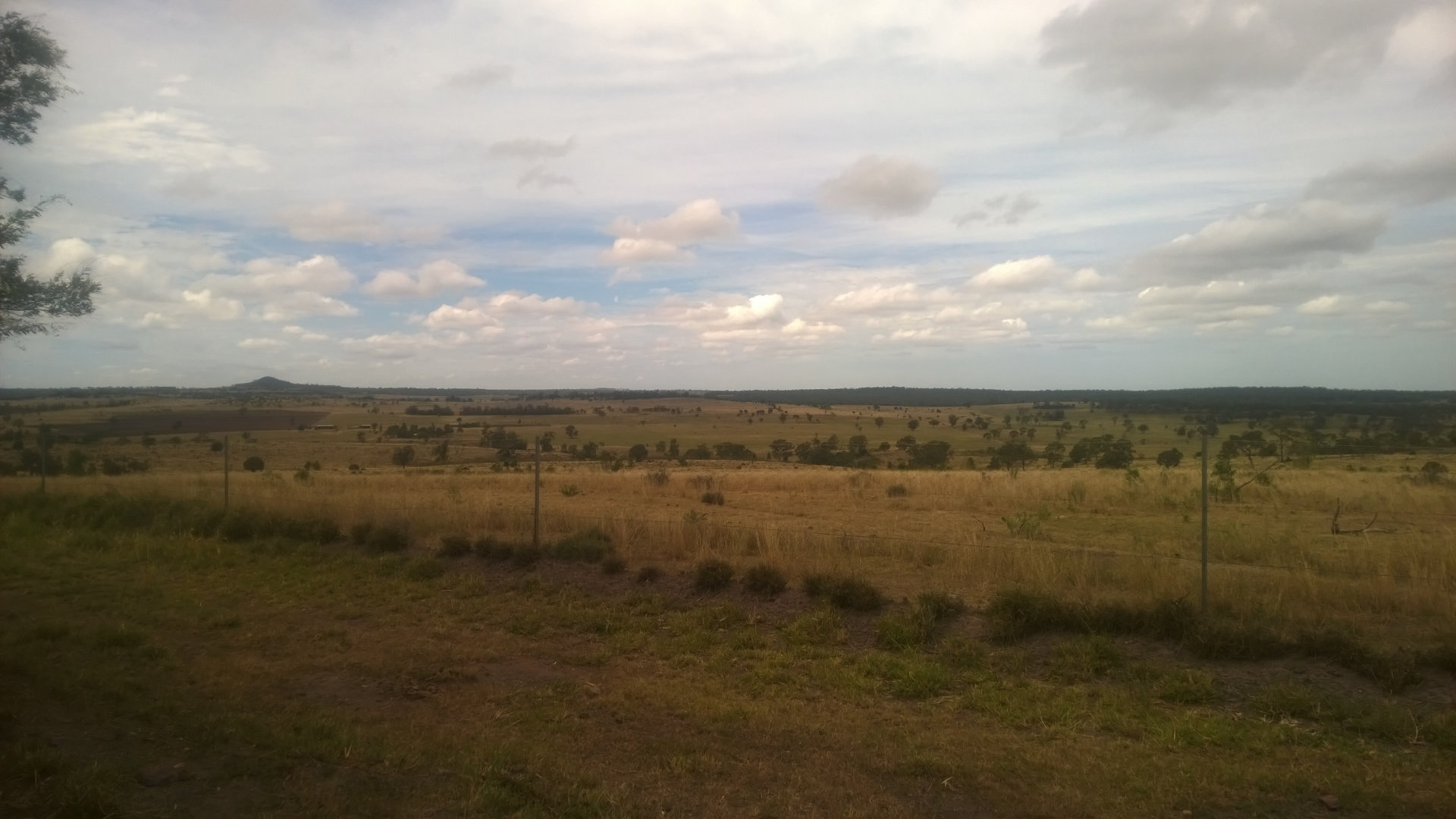
Boiling Springs Lookout is a lookout along the Dingo Fence not far from the start of the Dingo Fence ![]() between Jandowae and the Bunya Hwy.
between Jandowae and the Bunya Hwy.
Originally built in the 1880s as a rabbit proof fence, the dingo fence in Queensland was first proposed in 1948 to be upgraded to keep out dingos and wild dogs from sheep farms, however, it wasn’t until the late 1950s to be built.
The length of the fence seems to be different depending on where you see the information. The information board at Boiling Springs Lookout say the original fence was 5,600km but was shortened in the 1980s to 2,125km. This may be the Queensland portion, as 5,600km seems to be the most common length mentioned as the current total length.

The Queensland dingo fence joins with the New South Wales border fence, and finally the South Australian dog fence to form the longest man-made structure in the world. The fence runs through Cameron Corner where the three states meet.
 Something to be aware of, on the Bunya Hwy, the Dingo Fence Tourist Drive sign into Kingaroy Jandowae Rd states 12km. This is the distance to Boiling Point Springs, with the brown signs having different names. This caused some confusion as I thought Boiling Point Springs was a different destination and expected to find another destination 4kms further on.
Something to be aware of, on the Bunya Hwy, the Dingo Fence Tourist Drive sign into Kingaroy Jandowae Rd states 12km. This is the distance to Boiling Point Springs, with the brown signs having different names. This caused some confusion as I thought Boiling Point Springs was a different destination and expected to find another destination 4kms further on.
To get there:
 From Bunya Hwy between Bell and Kumbia, turn into Kingaroy Jandowae Rd at the Dingo Fence Tourist Drive sign. Follow for 8km and turn right into Boiling Springs Rd at the Boiling Springs Lookout sign. Boiling Springs Rd is a gravel road. After 3kms you will come to a gate on the Dingo Fence, which you need to open and close. The lookout is 1km from the gate.
From Bunya Hwy between Bell and Kumbia, turn into Kingaroy Jandowae Rd at the Dingo Fence Tourist Drive sign. Follow for 8km and turn right into Boiling Springs Rd at the Boiling Springs Lookout sign. Boiling Springs Rd is a gravel road. After 3kms you will come to a gate on the Dingo Fence, which you need to open and close. The lookout is 1km from the gate.
Cost: Free
Hours: Anytime
Toilets: No
Bins: No
Tables: Yes
Seating: Yes
Water: No
Food: No
Wheelchair accessible: Yes
Pets: Yes
Playground: No
BBQ: No


Thank you for clarifying the confusion. I stopped at the Dingo Fence gate, uncertain whether I could go on and how far. So I turned back. Next time I will go that extra 1 km. I hope the local council fixes the signage, as this is an iconic agricultural and engineering feat.